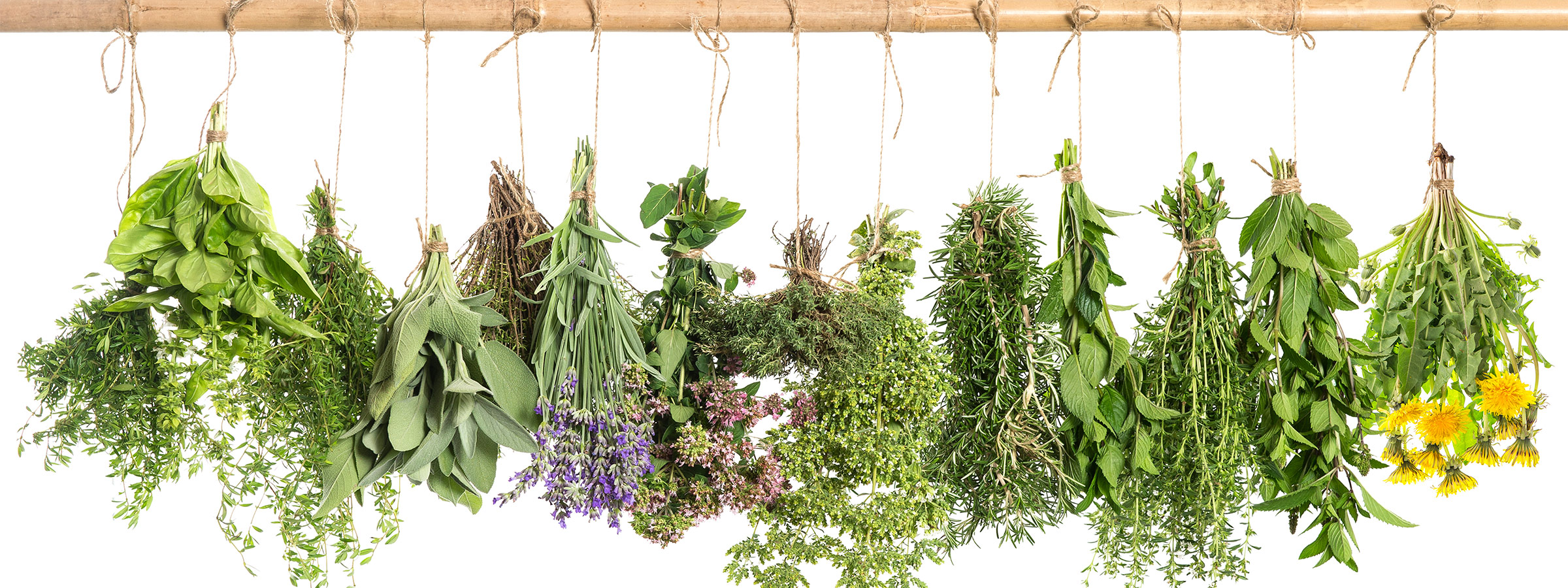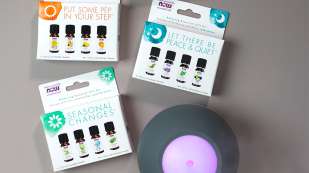Use coupon code MOISTURIZER with your purchase of $40 or more for a free†
Blemish Clear MoisturizerSpices Used to Create Essential Oils

Essential Oil fragrances
Learn about the spices needed to create essential oils and their sweet and exotic oil fragrances for use in aromatherapy.
A - B - C - E - F - G - H - J - L - M - N - O - P - R - S - T - W - Y
A
Anise, Star (Illicium verum) – Also referred to as aniseed, anise is a flowering herb found throughout the Mediterranean and Southwest Asia. The tiny seeds of this plant have been revered for centuries for their culinary and medicinal properties. Anise is believed to have been cultivated in Egypt and the Middle East during ancient times, and is mentioned in the works of the Greek scholars Pliny and Dioscorides. Anise made its way to Europe during the Middle Ages, where it was cultivated and highly prized as a culinary flavor and herbal remedy. Anise seed has a distinct, sweet, licorice-like flavor and aroma that’s found in a great variety of European and Middle Eastern confections. Star anise is a species of anise that differs from traditional anise in certain ways, but has the same distinct, licorice aroma due to anethole, a phytochemical found in both traditional and star anise. For aromatherapy, star anise essential oil has a warm, spicy, licorice-like scent that’s balancing, comforting and uplifting.
Atlas Cedar (Cedrus atlantica) – The Atlas cedar is a large evergreen native to Algeria and Morocco. It’s primarily an ornamental tree that thrives in temperate climates. Ancient Egyptian manuscripts indicate Atlas cedar oil was used in the mummification process. Like other species of cedar, Atlas cedar is a natural insect deterrent, and the wood is used in the manufacture of furniture such as wardrobes and drawers. For aromatherapy purposes, Atlas cedar oil has a potent, pungent aroma that’s woodsy and slightly sweet.
Balsam Fir (Abies balsamea) – Native to regions of North America, many Canadians and Americans will recognize the Balsam fir evergreen as one of the most popular species of Christmas tree. Historically, Balsam fir was used as a traditional remedy by some Native American tribes. As an essential oil for aromatherapy, Balsam fir oil has a clean, refreshing, woodsy, earthy aroma that’s balancing and empowering.
Basil (Ocimum basilicum) – Considered a sacred herb in India and in other cultures, basil is one of the most popular culinary herbs in the world, with a long history of use for both culinary, medicinal, and religious purposes. It’s mentioned in many of the classic herbal compendia, and in ancient times inspired both reverence and scorn. As ridiculous as it may seem today, basil was once thought to be able to spontaneously generate and/or grow scorpions, sometimes in the brain! Basil is a part of the traditions of many religions around the world, and some cultures consider it an aphrodisiac. For aromatherapy purposes, basil essential oil has a warm, spicy, pungent aroma that’s uplifting, energizing, and purifying.
Bergamot (Citrus bergamia) – Bergamot is a citrus tree widely cultivated in certain coastal regions of Italy and Sicily. The name bergamot is actually derived from Bergamo, a city in Lombardi, Italy, where commercial use of the tree originated. Bergamot is actually a hybrid, or a cross between orange and lemon trees, with an aroma that’s more orange than lemon. Bergamot is popular both as a scent and a flavoring. You’ll find its distinct, spicy-citrusy flavor as an integral component of cherished foods and beverages such as Earl Grey tea and Turkish Delight. This Middle Eastern confection is one that fans of the book The Lion, The Witch and The Wardrobe will remember as the sweet treat highly desired by younger brother Edmund. As a scent, bergamot’s subtle citrus/spice aroma is a common addition to many perfumes and cosmetics, and it works extremely well in combination with a wide variety of other essential oils.
Camphor, White (Cinnamomum camphora) – Camphor is a large, fragrant evergreen tree native to many countries in the Far East, including China, Japan, Taiwan, Korea and Vietnam. Its potent, medicinal aroma has been, and still is, revered in many cultures as a fragrance, an herbal remedy, and an insect deterrent. Its fragrance is so distinct that an entire scent classification is named after it – camphoraceous. Camphor was used for a variety of medicinal purposes in ancient times. During the epidemic of the Black Plague of the Middle Ages camphor was used as a fumigant. In India, camphor is valued as incense for religious ceremonies since the fumes aren’t irritating to the eyes, as many other aromatics are. As an essential oil for aromatherapy, camphor has a penetrating, medicinal aroma that’s purifying, energizing, and invigorating.
Cedar (Juniperus virginiana) – Our cedarwood oil is extracted from Juniperus virginiana, a cedar species native to North America. This medium to large evergreen can live for many centuries, with the oldest reported specimen reaching over 900 years old. Like many species of cedar, its wood repels insects, especially moths, so it’s often used in furnishings for clothes such as cedar chests. Cedarwood oil is one of the few essential oils that improves with age. For aromatherapy, cedarwood oil has a warm, woodsy, balsamaceous fragrance that’s both soothing and strengthening.
Chamomile (Chamaemelum nobile) – Chamomile is a flowering plant with a mild, apple-like aroma whose flowers are often mistaken for daisies. In fact, its name is loosely interpreted from Greek as “earth apple”, “ground apple” or “apple on the ground”. In Spanish it’s referred to as manzanilla, or “little apple”. With a long history of use for a variety of ailments, chamomile is one of the most popular herbal remedies in the world, and is mentioned in many ancient medical texts. In ancient Egypt it was used as a medicinal herb and an offering to the sun god Ra due to the flowers’ resemblance to the sun. Ancient Greeks and Romans used it as a fragrance for baths, as an herbal remedy, and as a flavoring for drinks. English Saxons considered chamomile one of their nine sacred herbs, and used it to lighten their hair. Today there are two types of chamomile used in commerce, Roman chamomile (Chamamelum nobile) and German chamomile (Matricaria recutita), with the German variety being more prevalent. For aromatherapy purposes chamomile essential oil has a delightfully sweet aroma that’s relaxing, calming, soothing and revitalizing.
Cinnamon (Cinnamomum zeylanicum) – Like other spices, cinnamon was an extremely valuable trade commodity in ancient times. Extracted from the bark of trees from the Cinnamomum genus, cinnamon has a very distinct flavor and aroma that’s warm, spicy and aromatic. Cinnamon’s value was such that it was considered a gift worthy of only royalty and divinity by many different cultures. It was revered as a spice and a flavoring for beverages, but its source was a closely guarded secret for centuries due to its fantastic value. Cinnamon is mentioned often in the Bible, and in ancient manuscripts from Egypt, Rome, Greece, China, India, Arabia and many others. In aromatherapy cinnamon oil’s warm aroma and spicy overtones are ideal for comforting and energizing. NOW Solutions offers two different varieties of cinnamon oil, Cinnamon Bark Oil from Cinnamomum verum and Cinnamon Cassia Oil from Cinnamomum cassia.
Citronella (Cymbopogon winteranius) – Citronella is another name for lemongrass, a genus of several tropical plants with a subtle citrus aroma belonging to the grass family. Citronella grasses are used for both culinary and medicinal purposes, but are known to many as a natural insect deterrent. Avid gardeners will often plant citronella grass throughout their gardens to deter mosquitoes and other insects. Historically citronella has been used primarily as a culinary herb, particularly in Asian cuisine, and to a lesser extent as a medicinal herb in a number of different cultures. As an essential oil for aromatherapy, citronella has a pungent, musky, citrusy aroma that’s clarifying, freshening and purifying.
Clary Sage (Salvia sclarea) – Also referred to as simply clary, clary sage is a plant native to the Mediterranean region with a history of use as a medicinal herb, although modern research has disproven several of its purported historical benefits. The word clary is derived from the Latin word clarus, which means “clear”. In ancient times it was called “clear eyes” due to its historical use as an herbal remedy for tired, strained eyes in various cultures. Clary sage is also thought to be a potent herbal aphrodisiac. For aromatherapy, clary sage oil has a herbaceous, lavender-like aroma that’s balancing, focusing and stimulating.
Clove (Eugenia caryophyllata) – If you’ve been around fresh cloves you probably knew it pretty quickly. Cloves are the pungent, strongly aromatic buds of the Eugenia caryophyllata, an evergreen native to Indonesia but now cultivated in India, Pakistan and other areas of the Middle East. They’re one of the most widely used spices in the world, lending their warm aroma and flavor to a variety of cuisines from around the world. Cloves also have a history of use as an herbal medicine, and as a breath freshener. In ancient China those addressing the emperor used cloves to freshen their breath. In aromatherapy clove essential oil has a warm, pungent, spicy aroma that’s ideal for soothing and comforting.
Cypress (Cupressus sempervirens) - Cupressus sempervirens is a species of cypress tree, also known as the Mediterranean and Italian cypress. This evergreen tree is native to the Mediterranean region and is an iconic ornamental tree due to its very slender, tapering shape, often likened to an exclamation mark. Cypress doesn’t have a history of use for medicinal purposes, but it was strongly associated with the afterlife and the underworld in ancient times, and was often a part of the funerary traditions of certain cultures. Cypress trees were often planted in cemeteries, and you’ll still find them in many cemeteries in Europe and the Middle East. Cypress trees are long-lived, with one tree in Iran estimated to be more than 4,000 years old. For aromatherapy, cypress essential oil has a sweet, warm, balsamic aroma with a hint of juniper and is centering, balancing and clarifying.
Eucalyptus (Eucalyptus globulus) – Native to Australia and to a lesser extent New Guinea and Indonesia, eucalyptus is deeply woven into the culture and history of The Land Down Under. It’s the dominant species of tree on the Australian continent and is mentioned extensively in Australian literature, music, art, and more. Eucalyptus leaves are a staple in the diet of the koala bear. Eucalyptus trees are commonly referred to as gum trees due to their high content of volatile eucalyptus oil. Their oil content is so pervasive that large stands of eucalyptus trees will often have a blue haze surrounding their crowns during warmer months due to oil droplets dissipating into the air. In fact, the Blue Mountains of Australia are named after this phenomenon. As an essential oil eucalyptus has a strong camphoraceous aroma that’s revitalizing, invigorating and clarifying. NOW Solutions also offers Eucalyptus radiata essential oil, another species of eucalyptus with a sweeter and slightly fruity aroma.
Frankincense (Boswellia carterii) – Frankincense is the name of the fragrant resin of certain species of Boswellia tree. The name is from the early French name franc encens, or high quality incense, a nod to the resin’s highly desirable aroma. In ancient times frankincense was a valuable trade commodity, primarily as incense for use in religious ceremonies, and was also used as an herbal medicine throughout Asia, Africa and India; frankincense is well-regarded in Ayurvedic medicine. Frankincense is one of the few essential oils that improve with age. As an essential oil for aromatherapy, frankincense has a unique fragrance with hints of camphor and citrus that’s ideal for relaxing, focusing and centering.
Geranium (Pelargonium graveolens) – When it comes to flowers you won’t find many more popular or ubiquitous than the geranium. A staple in floral beds and flower pots the world over, geraniums come in a variety of colors and thrive in almost any soil that’s not saturated with water. The name geranium is actually used for two different genera, Geranium and Pelargonium, a source of confusion to this day. Pelargonium is the genus most often found in plant nurseries and home gardens, and the one most often used for essential oils, but Geranium is the genus that’s considered true geranium. Geranium has a long history of use as an herbal remedy. In aromatherapy, geranium essential oil has a sweet, floral aroma that’s balancing, purifying, and normalizing.
Ginger (Zingiber officinale) – While many spices were highly valued in ancient times, perhaps none were as valuable as ginger. You won’t find many herbs with a longer history of human use. Early Indian and Chinese manuscripts indicate ginger was widely used as an herbal root tonic for a great variety of ailments and as a flavoring agent. In ancient Rome ginger was highly valued for its medicinal properties. Unlike most other herbs, ginger isn’t found growing wild, and its origin is somewhat of a mystery. As an essential oil for aromatherapy ginger oil has a warm, spicy aroma that’s balancing, clarifying and stabilizing.
Grapefruit (Citrus paradisi) – Known for their mouth-puckering tartness, grapefruits are actually a hybrid of the sweet orange and the pomelo. They’re believed to have originated in Barbados and were first discovered by Europeans visiting the island in the mid-1700s. Today they’re still referred to as one of the Seven Wonders of Barbados. As an essential oil grapefruit has a sweet, citrusy, slightly pungent aroma that’s purifying and uplifting.
Hyssop (Hyssopus officinalis) – A perennial herb native to the Mediterranean region, hyssop has long been associated with purity and purification, especially for religious purposes. Considered a holy herb in some cultures, it was used to cleanse sacred sites and was hung around homes to protect from evil spirits. Hyssop is mentioned several times in the Bible, but many experts believe the herb in reference wasn’t actually hyssop, but some other herb. Hyssop is an ingredient in certain liqueurs, with the most popular being the French liqueur Chartreuse. This herb is also used for culinary purposes, although only a little is required for most applications as hyssop is very strong. As an essential oil for aromatherapy, hyssop has a sweet, herbaceous aroma that’s clarifying, refreshing and purifying.
Juniper Berry (Juniperus communis) – Known as common juniper, Juniperus communis is an evergreen tree species widely dispersed throughout the temperate Northern Hemisphere. As with many medicinal herbs and botanicals, the first mention of juniper berries as a medicine is believed to have been in Egyptian manuscripts, but juniper has been used both medicinally and culinarily by many different cultures, including ancient Greeks, Romans and Indians. Native American Indians used juniper berries extensively for a variety of purposes. Imbibers of gin will be very familiar with juniper berries, even if they don’t realize it – they’re responsible for gin’s distinct flavor. The use of juniper as a spice is popular in European cuisines. Juniper berry essential oil is one of the more popular for aromatherapy and is well-regarded in the perfume industry. It has an invigorating, slightly fruity and floral fragrance that’s described as clear and fresh. In aromatherapy juniper berry oil is balancing, empowering and restorative.
Lavender [Lavandula officinalis (spp.)] – There aren’t many aromatic herbs more recognizable than lavender. A member of the mint family, lavender can be found throughout Europe and in certain regions of Africa, Asia and the Mediterranean. The name lavender is believed to derive from the Latin lavare, which means “to wash”, or possibly livere, which means “blueish”. Lavender has a long history of use as a medicine and a fragrance. Ancient Egyptians, Greeks and Romans all valued it for its pleasant scent and medicinal properties. It was a common addition to bathwater and was also used for various culinary purposes. Today lavender flowers are a common addition to many potpourris, and lavender oil is widely used in the perfume and cosmetic industries, as well as in other commercial products such as soaps and cleaners. For aromatherapy purposes lavender oil has a sweet, floral, woodsy aroma that’s soothing and balancing. NOW Solutions also offers Spike Lavender (Lavandula latifolia), a type of lavender with a higher camphor content than true lavender.
Lemongrass (Cymbopogon flexuosus) – Sometimes referred to as citronella grass, this particular species of lemongrass is native to India and surrounding countries. It’s been used for centuries primarily as a culinary herb, particularly in Asian cuisine, and to a lesser extent as a medicinal herb. As an essential oil for aromatherapy, lemongrass has a strong, lemon-like aroma that’s purifying, stimulating and cleansing.
Lemon Oil (Citrus limon) – If there’s one scent universally associated with clean and fresh, it would be that of the lemon. For thousands of years the lemon has been puckering mouths, titillating taste buds, freshening air and livening up food around the world. Lemons are a universal symbol of warmth and sunshine. Lemon trees are believed to originate from India and China, but are now grown world-wide. In ancient times lemons were used as a fragrance, for decoration and, to a lesser extent, for medicinal purposes. They were once believed to be an antidote for poison. Lemons were initially brought to Europe (Spain) by Arab traders, but Crusaders returning from the Middle East are believed to be responsible for their widespread introduction to many European countries. Christopher Columbus brought lemons to the New World during his second expedition, and they were soon being widely cultivated in the Caribbean, where the climate is ideal for citrus cultivation. Today lemons are a culinary staple in many cultures, and are beloved by do-it-yourselfers who value its aroma and cleaning properties. For aromatherapy purposes lemon oil has a perky, citrusy, sweet-and-sour aroma that’s refreshing, cheerful and uplifting.
Lime Oil (Citrus aurantifolia) – The history and use of limes has many similarities to that of lemons. Believed to have originated in Southeast Asia, limes were introduced to the Mediterranean region and Europe by Arab traders sometime during the 10th century. Like lemons, limes were further distributed throughout European countries by returning Crusaders during the 13th century. Limes are probably best known historically as a remedy for scurvy, a deadly disease that ravaged ancient sailors on long voyages. Although unknown at the time, scurvy is a disease caused by vitamin C deficiency. The diet of sailors was terrible to begin with, but the lack of any source of vitamin C proved lethal for many. A Scottish physician with the British Royal Navy, James Lind, is credited with discovering the cure for scurvy, although at the time it was actually lemons Mr. Lind employed, and vitamin C wasn’t even known, so lemons, and citrus fruits in general, were thought to be the remedy. The British Navy later switched from lemons to limes since limes were more readily available, leading to the nickname “limey” as a derogatory term for British sailors, who often smelled of limes. Like lemons, limes have become a culinary staple, although not quite as popular as their lemony brethren. For aromatherapy purposes, lime oil has a sweet, citrusy aroma that’s uplifting, refreshing and elating.
Marjoram (Thymus mastichina) – While commonly referred to as marjoram, Thymus mastichina is actually a species of wild thyme found in Spain. This particular species of aromatic herb doesn’t enjoy extensive use as a medicinal or culinary herb; wild thyme and common thyme are used more so for these purposes. Thymus mastichina is valued for its essential oil, which combines earthy, woodsy tones with a hint of camphor and eucalyptus. For aromatherapy it’s a normalizing, comforting, warming aroma that aids in relaxation.
Myrrh (Commiphora myrrha) – Myrrh is the resin, or tree sap, obtained from several species of trees within the genus Commiphora. It has an extensive history of use for medicinal and aromatic purposes dating back thousands of years. It’s mentioned in the records of numerous cultures, including Hebrew, Egyptian, Arabic, African, Greek, Roman, Chinese, Jewish, and others. Myrrh was and still is an integral component of many incenses. Today myrrh is primarily used as an essential oil for aromatherapy, and can also be found in some commercial skin care products. For aromatherapy myrrh oil has a warm, musky aroma that’s focusing, centering and meditative.
Nutmeg (Myristica fragrans) - Nutmeg is a spice from trees in the genus Myristica, which are native to the Spice Islands of Indonesia. Due to the isolated location of the islands, which was kept a secret for centuries, nutmeg wasn’t widely known to or used by other cultures until the Middle Ages. There are ancient records of its use in Roman, Indian and Arabic cultures. Muslim sailors are believed to have discovered the Spice Islands and nutmeg during the fourteenth century, and they kept the location a closely guarded secret because the rarity of nutmeg made it highly profitable. Nutmeg was extremely popular in Europe during the Middle Ages, and was very expensive as well. The Portugese, Dutch and British all vied for control of the valuable nutmeg trade during the fifteenth and sixteenth centuries. In fact, the Dutch actually traded the island of Manhattan to the British in exchange for the island they controlled at the time, just to obtain more nutmeg. Today nutmeg is also made into an essential oil with a pungent, spicy aroma that’s energizing and stimulating.
Orange (Citrus sinensis) – Derived from the fruit of Citrus sinensis, orange oil is a cold-pressed essential oil extracted from orange rinds. Oranges are perhaps the most popular of the citrus fruits, and are among the oldest cultivated fruits in the world. Oranges were widely traded in ancient times, and were used both as food and medicine. Oranges have been used in traditional Chinese medicine for thousands of years. Ponce de Leon is believed to have introduced the fruit to Florida in the sixteenth century. Today orange oil is a popular addition to a variety of fragrances and natural cleaning products. For aromatherapy orange oil has a fresh, sweet, citrusy aroma that’s refreshing, uplifting and invigorating.
Oregano (Origanum vulgare) – One of the world’s most popular culinary herbs, oregano is a staple of Italian-American cuisine but is also used extensively in Mediterranean and Latin American cuisines. Traditionally it’s been used for both culinary and medicinal purposes for thousands of years, and in ancient times was believed to have magical properties. Oregano was believed to bring about good luck and to protect individual health and well-being. As an essential oil for aromatherapy, oregano oil has a spicy, camphoraceous aroma that’s comforting and invigorating.
Patchouli (Pogostemon cablin) – While many Americans may know patchouli as the scent of choice for hippies during the '60s and '70s, this herb, which belongs to the mint family, has been a popular addition to perfumes and incenses for hundreds of years, and still is today. In ancient times it was used as a moth repellent to protect valuable cloth materials, such as silk, and it still enjoys use as a natural insect repellent today. Patchouli has a unique and memorable aroma. The essential oil is one of the few that actually improves with age, replacing its pungent undertone with a much more desirable, delicate sweetness. For aromatherapy purposes patchouli oil has a musky, earthy aroma that’s soothing and stimulating.
Pennyroyal (Mentha pulegium) – With an aroma similar to that of spearmint, pennyroyal (Mentha pulegium) has a long history of use as a traditional folk remedy and a culinary herb. Pennyroyal was prized by both the Greeks and Romans and, like many herbs in ancient times, it was believed to have healing properties, to the point that just having a pennyroyal branch in a sickroom was thought to be beneficial. It should be mentioned that, while the herb itself is benign, pennyroyal oil can be fatal if ingested due to concentrated levels of a highly volatile organic compound called pulegone. When used responsibly for aromatherapy, pennyroyal oil has a fresh, minty aroma that’s stimulating and uplifting.
Peppermint (Mentha piperita) – Few aromas are more recognizable or beloved than that of peppermint. A member of the genus Mentha, peppermint is actually a hybrid of spearmint, water mint and possibly forest mint, which are other species in the Mentha genus. Its name, peppermint, owes to the unique, slightly peppery undertone found only in this particular species of mint. Traditionally peppermint tea has a long history of use as a digestive stimulant. For aromatherapy purposes peppermint oil has a fresh, strong, minty, slightly peppery aroma that’s revitalizing, invigorating and cooling.
Pine Needle (Pinus sylvestris) – One of the most recognizable trees in the world, the pine is found throughout many regions of the Northern Hemisphere and consists of approximately 126 species in the genus Pinus. North American natives used many parts of the pine tree as traditional herbal remedies, including wood, bark, needles, cones, seeds and sap. Pine needles and bark are known to contain vitamin C, and American Indians brewed herbal teas with them. They would also cut strips of bark and use them as compresses and wound coverings. Today the refreshing scent of pine can be found in a variety of cleaning and air freshening products. As an essential oil for aromatherapy pine needle oil ranges from fresh and foresty to pungent and balsamic, and is purifying, centering and refreshing.
Rosemary (Rosmarinus officinalis) – Derived from Latin for dew (ros) and sea (marinus) – dew of the sea – Rosemary is an aromatic evergreen herb from the mint family with a long history of use as a culinary herb and a traditional herbal remedy. It was thought to enhance memory and to protect against evil dreams and nightmares. Rosemary was used in weddings as a headpiece for the bride, symbolizing love, fidelity and remembrance. As a cooking herb rosemary is often found in Italian cuisine and has unique flavor and aroma that complements a great variety of foods. As an essential oil for aromatherapy rosemary oil has a warm, camphoraceous aroma that’s uplifting and purifying.
Sage (Salvia officinalis) – This perennial evergreen herb is found throughout the Mediterranean region and, like many other herbs used for essential oils, has been used both culinarily and medicinally for centuries. Sage is truly a storied herb, with so many purported traditional benefits that it bordered on the miraculous. We won’t list them all here, but suffice it to say that sage’s reputation as a traditional herbal remedy is hard to rival. As a culinary herb sage has a fresh, savory flavor and is widely used in the cuisines of many different cultures. As an essential oil for aromatherapy sage oil has a warm, camphoraceous aroma that’s balancing, soothing and normalizing.
Spearmint (Mentha spicata) – One of many species of mint, spearmint (Mentha spicata) is so named due to either its pointed leaves or tapered blossom, and is a hardy herb found throughout the temperate regions of the world. Spearmint is mentioned throughout history in the ancient texts of many different cultures. As with many herbs in the mint family, spearmint was often used for digestive complaints and was considered especially useful for individuals with poor digestion. Spearmint is widely used in the foods and beverages of many different cultures, especially in candies and gums. As an essential oil for aromatherapy spearmint oil has a refreshing minty aroma that’s more subtle and gentle than peppermint, and this aroma is cooling, stimulating and invigorating.
Tangerine (Citrus reticulata) – Similar but different from oranges, tangerines are typically smaller, softer and less tart than their citrusy cousins. Cultivated in the Far East for thousands of years, they’re now widely cultivated in various regions of the world. Like other citrus fruits, tangerines are a natural source of vitamin C and other nutrients. For aromatherapy purposes tangerine oil has a sweet, pleasant, citrusy aroma that’s cheerful, invigorating and inspiring.
Tea Tree (Melaleuca alternofolia) – With a long and interesting history, tea tree (Melaleuca alternifolia) is deeply woven into the culture of Australia, where it originated and still grows in abundance today. Australian Aborigines have used various parts of the tea tree for hundreds of years as a traditional herbal remedy for a variety of ailments. Tea tree is a common home remedy for many Australians. During World War II Australian soldiers carried tea tree oil in their first aid kits. Today tea tree oil is a popular essential oil for aromatherapy with a warm, spicy and lightly medicinal aroma that’s cleansing, purifying and renewing.
Thyme, White (Thymus vulgaris/zygis) – This popular evergreen herb is a member of the mint family and is widely used today as an ornamental plant and a culinary herb, and it has a history of use as a traditional herbal remedy in numerous ancient cultures. Ancient Egyptians prized thyme as an embalming agent, and it was widely used by Egyptians, Greeks and Romans as an air freshener and an ingredient in incense. Thyme was believed to be a source of courage, which carried over into the Middle Ages, when maidens would bequeath knights with thyme leaves to bring them courage during battles and in competition. As an essential oil for aromatherapy white thyme oil has a pleasant, pungent aroma that’s uplifting, empowering and clarifying.
Wintergreen (Gaultheria procumbens) – Wintergreen isn’t a single herb, but rather a collection of several plants in the genus Gaultheria. Native Americans have used wintergreen medicinally for hundreds of years, primarily as a tea. Most of us know wintergreen as the refreshing flavor found in a variety of gums and candies, as well as other products. As an essential oil for aromatherapy wintergreen oil has a warm, sweet, minty aroma that’s stimulating, refreshing and uplifting.
Ylang Ylang (Cananga odorata) – Pronounced “e-lang e-lang”, ylang ylang is the common name of the Cananga tree (Cananga odorata) and its flowers. The Cananga is found throughout the Southern Pacific, including the Philippines, Malaysia and Indonesia. The flowers yield a fragrant essential oil with a pleasingly floral aroma that’s soothing and comforting, and conducive to romance.











